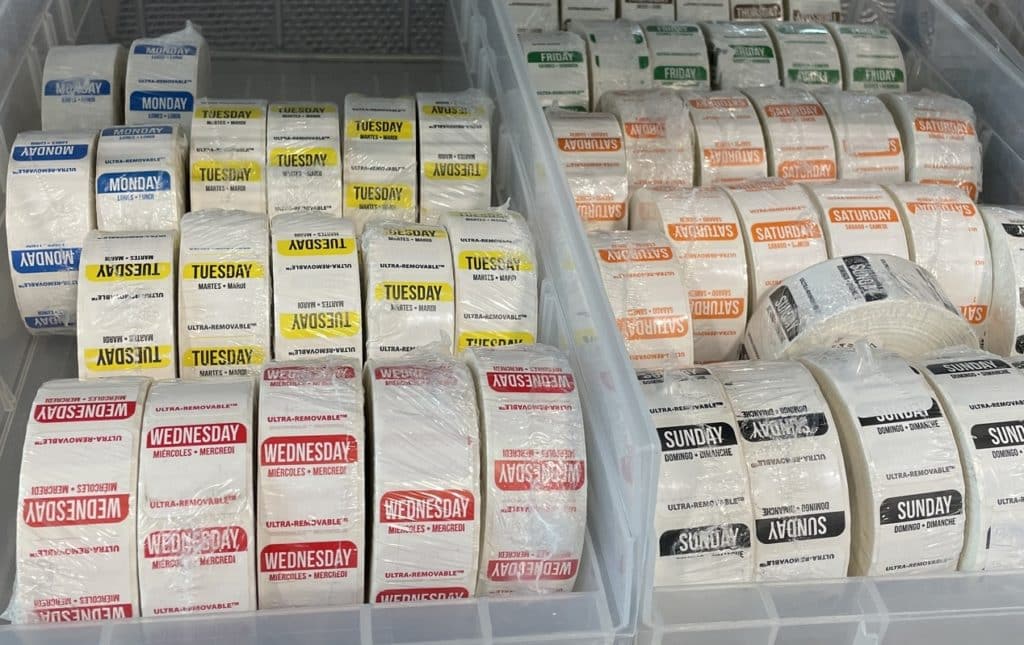Learn how to label food in a restaurant or commercial kitchen and why it’s important
Understanding how to label food using food rotation labels is one of the most important and time-saving activities for managing a more efficient and organized commercial kitchen. Food rotation labels enable you to rapidly identify food items, set up a food storage strategy that prevents counters from becoming cluttered, and label food appropriately. Maintaining appropriate food labeling in your kitchen is an FDA regulation.
Why is Labeling Food so Important?
The benefits of utilizing labels for food rotation extend far beyond simply being able to tell which storage bins contain what item and when to use them by. You may use them for a lot more things to maintain a business kitchen that is organized, hygienic, and effective.
Safety First
Food labeling reduces the risk of foodborne illness in commercial kitchens. You may quickly name the type of food in the storage container, the date it was added to the storage container, and the date the food will expire by attaching food rotation labels to your storage bins.
All time- and temperature-controlled foods require these three key pieces of information:
- Type of food
- Date food was added
- Date food expires
Reduce Waste
You may reduce food waste in your business kitchen by using accurate food rotation labels to help you determine when food will expire. You’ll be more inclined to develop menu items that include tomatoes before they go bad if you know you have to use them within the following two days.
Organization
Keeping a kitchen organized also requires labeling all of your items. You may ensure that all of your storage containers for vegetables, fruits, meats, and other items with similar labels are close to one another by labeling items with food rotation labels. This aids in preventing foodborne illness by preventing the contamination of various foods. Keeping distance between fruits and vegetables and raw meat helps prevent the spread of infections like salmonella. Also, the use of a color-coded labeling scheme reduces confusion about what needs to be used first.
Simplify Inventory
You can quickly inventory all of your possessions by categorizing your food stock. As a result, when it’s time to place your order, you’ll be able to decide easily whether to buy more or less of a particular item.
What Information Should I Include on a Food Rotation Label?
Step one involves labeling your food storage bins with colored food rotation labels; step two involves making sure the information you include on the label is pertinent to how you intend to run and organize your commercial kitchen.
- Identify the product first. Write clearly.
- Workers sign the label they made with their names or initials. If something goes wrong, this will help to establish accountability among your staff.
- Include the day and time when the product was prepared. You can estimate the product’s shelf life with the use of this piece of information. To avoid serving damaged food, include both the prep day and either the shelf life or the use-by date of the product on your food rotation labels.
- You can also think about incorporating handling recommendations, allergy alerts, and preparation recommendations on your labels.
Get Organized Week
Food rotation labels provide invaluable benefits to a commercial kitchen of any size. Get Organized Week is November 2-8, and it would be a great time to review the labeling system with your staff and get your kitchen organized!

